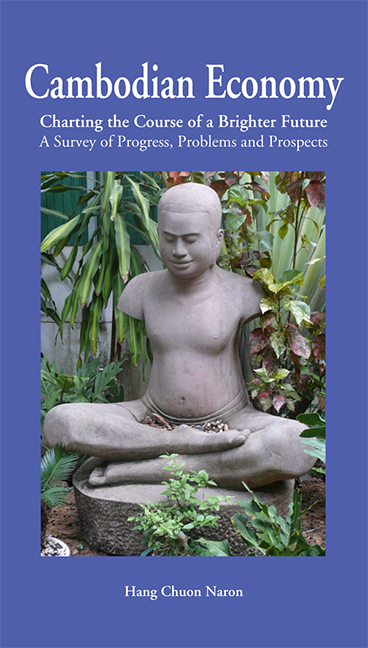 Cambodian Economy
Cambodian Economy from PART IV - THE CHALLENGE OF INDUSTRIALIZATION
Published online by Cambridge University Press: 21 October 2015
After achieving independence in 1953, Cambodia pursued a mixed economy model in which both State property and private property were recognized and allowed to coexist. Agriculture, light industry, and commercial services were left to the private sector, while heavy industry and finance were controlled by the public sector. Large SOEs were created in the 1960s. At that time, Cambodia pursued an import substitution policy in light industry and agricultural product processing industries, which enjoyed strong protection, government subsidies, and were often allowed to function as monopolies.
State-Owned Enterprise
The government of the People's Republic of Kampuchea (PRK), formed in 1979, inherited from the Khmer Rouge regime an economy where private property had been destroyed with much of the production apparatus in ruins. Industrial enterprises were State property. In the early 1980s, the centralized management system was gradually made more flexible, the production structure evolved with a market orientation, and the private sector officially recognized in 1985 began to play an increasingly important role in the economy. With private sector's revival by early 1989, nearly 90% of medium and large-size industrial enterprises had begun to produce again. However, State-Owned Enterprises (SOEs) formed the core of the Cambodian industry.
In late 1989, the authorities of the People's Republic of Kampuchea instituted a new regime of financial autonomy for SOEs, which were required to be financially self- sufficient. This meant that they would no longer receive subsidies for operations and no capital loans. However, they would keep all of their net profit and would pay to the State only half the amount of the loan amortization due from them. They would have to borrow from banks at market rates for their working capital and investment needs. In theory, they would function like commercial businesses in a market economy. Further, they would be subject to the same taxes as private businesses.
To save this book to your Kindle, first ensure [email protected] is added to your Approved Personal Document E-mail List under your Personal Document Settings on the Manage Your Content and Devices page of your Amazon account. Then enter the ‘name’ part of your Kindle email address below. Find out more about saving to your Kindle.
Note you can select to save to either the @free.kindle.com or @kindle.com variations. ‘@free.kindle.com’ emails are free but can only be saved to your device when it is connected to wi-fi. ‘@kindle.com’ emails can be delivered even when you are not connected to wi-fi, but note that service fees apply.
Find out more about the Kindle Personal Document Service.
To save content items to your account, please confirm that you agree to abide by our usage policies. If this is the first time you use this feature, you will be asked to authorise Cambridge Core to connect with your account. Find out more about saving content to Dropbox.
To save content items to your account, please confirm that you agree to abide by our usage policies. If this is the first time you use this feature, you will be asked to authorise Cambridge Core to connect with your account. Find out more about saving content to Google Drive.